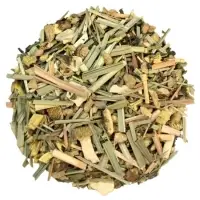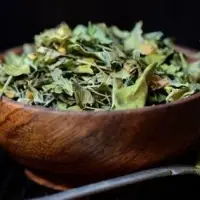

Stinging nettle redirects here. For the Australian plant, see Urtica incisa. For other plants that sting, see Stinging plant Plants with stinging hairs. Urtica dioica, often known as common nettle, stinging nettle (although not all plants of this species sting) or nettle leaf, or just a nettle or stinger, is a herbaceous perennial flowering plant in the family Urticaceae. Originally native to Europe, much of temperate Asia and western North Africa, it is now found worldwide, including New Zealand and North America. The species is divided into six subspecies, five of which have many hollow stinging hairs called trichomes on the leaves and stems, which act like hypodermic needles, injecting histamine and other chemicals that produce a stinging sensation upon contact contact urticaria a form or contact dermatitis). The plant has a long history of use as a source for traditional medicine, food, tea, and textile raw material in ancient societies.

Stinging nettle redirects here. For the Australian plant, see Urtica incisa. For other plants that sting, see Stinging plant Plants with stinging hairs. Urtica dioica, often known as common nettle, stinging nettle (although not all plants of this species sting) or nettle leaf, or just a nettle or stinger, is a herbaceous perennial flowering plant in the family Urticaceae. Originally native to Europe, much of temperate Asia and western North Africa, it is now found worldwide, including New Zealand and North America. The species is divided into six subspecies, five of which have many hollow stinging hairs called trichomes on the leaves and stems, which act like hypodermic needles, injecting histamine and other chemicals that produce a stinging sensation upon contact (contact urticaria, a form or contact dermatitis). The plant has a long history of use as a source for traditional medicine, food, tea, and textile raw material in ancient societies.
Citronella grass (Cymbopogon nardus and Cymbopogon winterianus) grow to about 2 m (6.6 ft) and have magenta-colored base stems. These species are used for the production of citronella oil, which is used in soaps, as an insect repellent (especially mosquitoes) in insect sprays and candles, and in aromatherapy. The principal chemical constituents of citronella, geraniol and citronellol, are antiseptics, hence their use in household disinfectants and soaps. Besides oil production, citronella grass is also used for culinary purposes, as a flavoring. East Indian lemongrass (Cymbopogon flexuosus), also called Cochin grass or Malabar grass, is native to Cambodia, Vietnam, Laos, India, Sri Lanka, Burma, and Thailand, while West Indian lemongrass (Cymbopogon citratus) is native to maritime Southeast Asia. While both can be used interchangeably, C. citratus is more suitable for cooking. In India, C. citratus is used both as a medical herb and in perfumes. C. citratus is consumed as a tea for anxiety in Brazilian folk medicine, but a study in humans found no effect. The tea caused a recurrence of contact dermatitis in one case.
Citronella grass (Cymbopogon nardus and Cymbopogon winterianus) grow to about 2 m (6.6 ft) and have magenta-colored base stems. These species are used for the production of citronella oil, which is used in soaps, as an insect repellent (especially mosquitoes) in insect sprays and candles, and in aromatherapy. The principal chemical constituents of citronella, geraniol and citronellol, are antiseptics, hence their use in household disinfectants and soaps. Besides oil production, citronella grass is also used for culinary purposes, as a flavoring. East Indian lemongrass (Cymbopogon flexuosus), also called Cochin grass or Malabar grass, is native to Cambodia, Vietnam, Laos, India, Sri Lanka, Burma, and Thailand, while West Indian lemongrass (Cymbopogon citratus) is native to maritime Southeast Asia. While both can be used interchangeably, C. citratus is more suitable for cooking. In India, C. citratus is used both as a medical herb and in perfumes. C. citratus is consumed as a tea for anxiety in Brazilian folk medicine, but a study in humans found no effect. The tea caused a recurrence of contact dermatitis in one case.
M. oleifera is a fast-growing, deciduous tree that can reach a height of 10 -12 m (32- 40 ft) and trunk diameter of 45 cm (1.5 ft). The bark has a whitish-grey colour and is surrounded by thick cork. Young shoots have purplish or greenish-white, hairy bark. The tree has an open crown of drooping, fragile branches and the leaves build up a feathery foliage of tripinnate leaves. The flowers are fragrant and hermaphroditic, surrounded by five unequal, thinly veined, yellowish-white petals. The flowers are about 1.0 - 1.5 cm (1/2) long and 2.0 cm (3/4) broad. They grow on slender, hairy stalks in spreading or drooping flower clusters which have a length of 10 -25 cm. Flowering begins within the first six months after planting. In seasonally cool regions, flowering only occurs once a year between April and June. In more constant seasonal temperatures and with constant rainfall, flowering can happen twice or even all year-round. The fruit is a hanging, three-sided brown capsule of 20 - 45 cm size which holds dark brown, globular seeds with a diameter around 1 cm. The seeds have three whitish papery wings and are dispersed by wind and water. In cultivation, it is often cut back annually to 1 - 2 m (3 - 6 ft) and allowed to regrow so the pods and leaves remain within arm' s reach.
M. oleifera is a fast-growing, deciduous tree that can reach a height of 10 - 12 m (32 - 40 ft) and trunk diameter of 45 cm (1.5 ft). The bark has a whitish-grey colour and is surrounded by thick cork. Young shoots have purplish or greenish-white, hairy bark. The tree has an open crown of drooping, fragile branches and the leaves build up a feathery foliage of tripinnate leaves. The flowers are fragrant and hermaphroditic, surrounded by five unequal, thinly veined, yellowish-white petals. The flowers are about 1.0 - 1.5 cm (1/2) long and 2.0 cm (3/4) broad. They grow on slender, hairy stalks in spreading or drooping flower clusters which have a length of 10 - 25 cm. Flowering begins within the first six months after planting. In seasonally cool regions, flowering only occurs once a year between April and June. In more constant seasonal temperatures and with constant rainfall, flowering can happen twice or even all year-round. The fruit is a hanging, three-sided brown capsule of 20â??45 cm size which holds dark brown, globular seeds with a diameter around 1 cm. The seeds have three whitish papery wings and are dispersed by wind and water. In cultivation, it is often cut back annually to 1 - 2 m (3 - 6 ft) and allowed to regrow so the pods and leaves remain within arm's reach.
M. oleifera is a fast-growing, deciduous tree that can reach a height of 10 - 12 m (32 - 40 ft) and trunk diameter of 45 cm (1.5 ft). The bark has a whitish-grey colour and is surrounded by thick cork. Young shoots have purplish or greenish-white, hairy bark. The tree has an open crown of drooping, fragile branches and the leaves build up a feathery foliage of tripinnate leaves. The flowers are fragrant and hermaphroditic, surrounded by five unequal, thinly veined, yellowish-white petals. The flowers are about 1.0 - .5 cm (1/2) long and 2.0 cm (3/4 ) broad. They grow on slender, hairy stalks in spreading or drooping flower clusters which have a length of 10 - 25 cm. Flowering begins within the first six months after planting. In seasonally cool regions, flowering only occurs once a year between April and June. In more constant seasonal temperatures and with constant rainfall, flowering can happen twice or even all year-round. The fruit is a hanging, three-sided brown capsule of 20â??45 cm size which holds dark brown, globular seeds with a diameter around 1 cm. The seeds have three whitish papery wings and are dispersed by wind and water. In cultivation, it is often cut back annually to 1 - 2 m (3 - 6 ft) and allowed to regrow so the pods and leaves remain within arm's reach.
In Laos, (it known as pak i tou, lemon basil is used extensively in soups, stews, curries and stir-fried dishes as it is the most commonly used type of basil in Laos. Many Lao stews require the use of lemon basil as no other basil varieties are acceptable as substitutes. The most popular Lao stew called or lam uses lemon basil as a key ingredient. Lemon basil is the only basil used much in Indonesian cuisine, where it is called kemangi. It is often eaten raw with salad or lalap (raw vegetables) and accompanied by sambal. Lemon basil is often used to season certain Indonesian dishes, such as curries, soup, stew and steamed or grilled dishes. In Thailand, Lemon basil, called maenglak (Thai, is one of several types of basil used in Thai cuisine. The leaves are used in certain Thai curries and it is also indispensable for the noodle dish khanom chin nam ya. In the Philippines,where it is called sangig, particularly in Cebu and parts of Mindanao, Lemon basil is used to add flavor to Law-uy, which is an assortment of local greens in a vegetable-based soup. The seeds resemble frog's eggs after they have been soaked in water and are used in sweet desserts. It is also used in North East part of India state Manipur. In Manipur, it is used in curry like pumpkin, used in singju (a form of salad), and in red or green chilli pickles. The Garo, Khasi and Jaintia tribe of Meghalaya also use it in their cuisine. The Garos call it Panet (pronounced Phanet). They use it to prepare cold sauce (Ind. Chutney) with added ingredients like fermented fish, chilly, onions sometimes roasted tomatoes.
Ocimum tenuiflorum (synonym Ocimum sanctum), commonly known as holy basil or tulsi, is an aromatic perennial plant in the family Lamiaceae. It is native to the Indian subcontinent and widespread as a cultivated plant throughout the Southeast Asian tropics. Tulsi is cultivated for religious and traditional medicine purposes, and also for its essential oil. It is widely used as a herbal tea, commonly used in Ayurveda, and has a place within the Vaishnava tradition of Hinduism, in which devotees perform worship involving holy basil plants or leave
Ocimum tenuiflorum (synonym Ocimum sanctum), commonly known as holy basil or tulsi, is an aromatic perennial plant in the family Lamiaceae. It is native to the Indian subcontinent and widespread as a cultivated plant throughout the Southeast Asian tropics. Tulsi is cultivated for religious and traditional medicine purposes, and also for its essential oil. It is widely used as a herbal tea, commonly used in Ayurveda, and has a place within the Vaishnava tradition of Hinduism, in which devotees perform worship involving holy basil plants or leave
Ocimum tenuiflorum (synonym Ocimum sanctum), commonly known as holy basil or tulsi, is an aromatic perennial plant in the family Lamiaceae. It is native to the Indian subcontinent and widespread as a cultivated plant throughout the Southeast Asian tropics. Tulsi is cultivated for religious and traditional medicine purposes, and also for its essential oil. It is widely used as a herbal tea, commonly used in Ayurveda, and has a place within the Vaishnava tradition of Hinduism, in which devotees perform worship involving holy basil plants or leaves.








